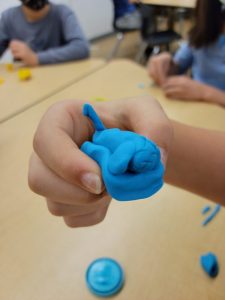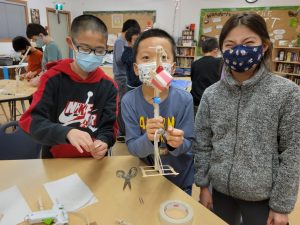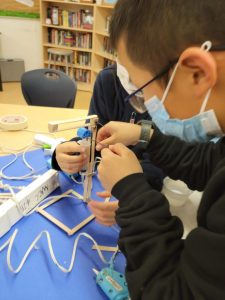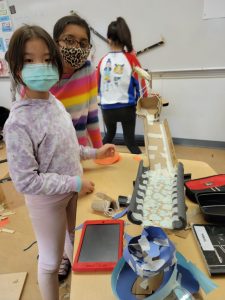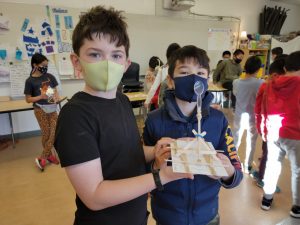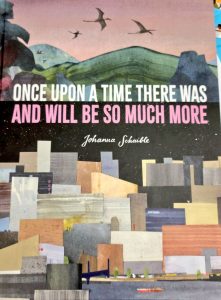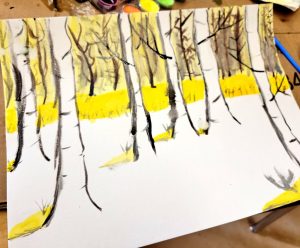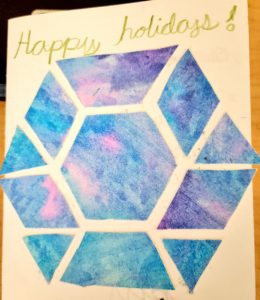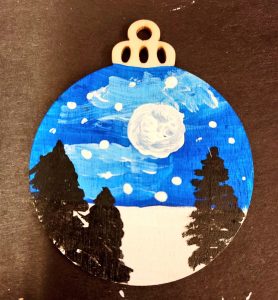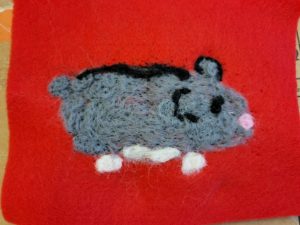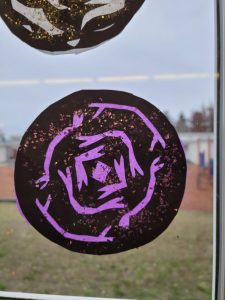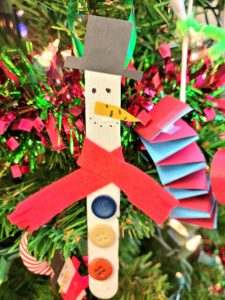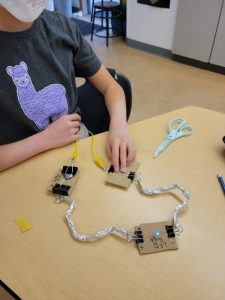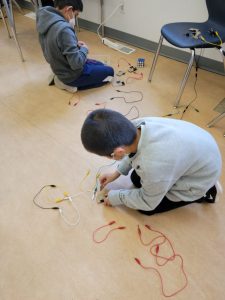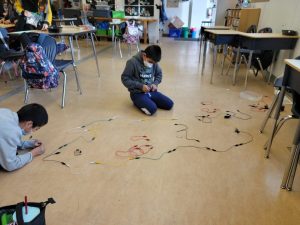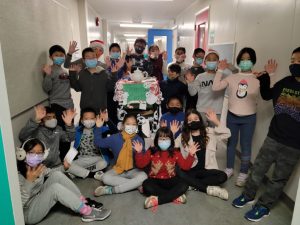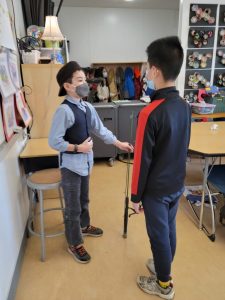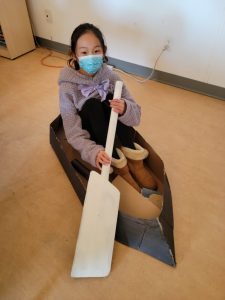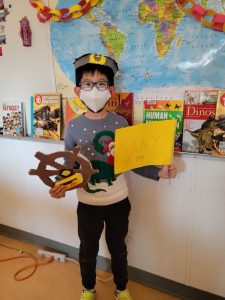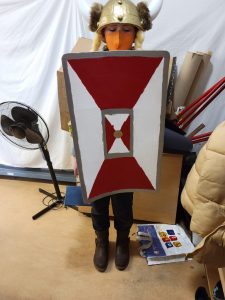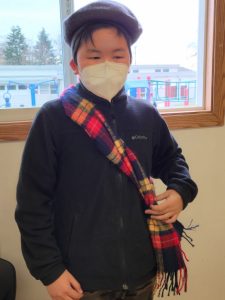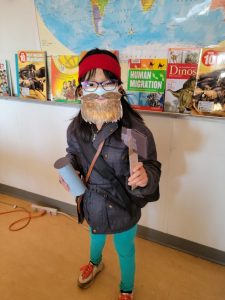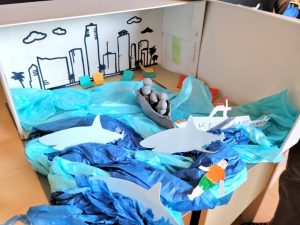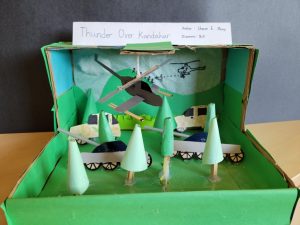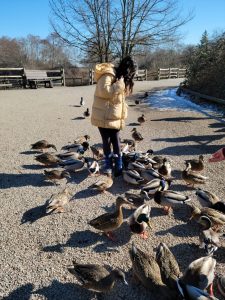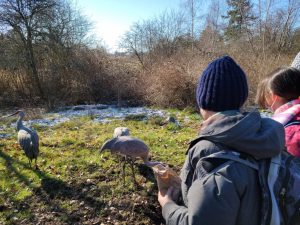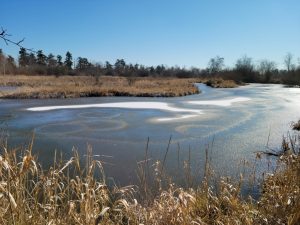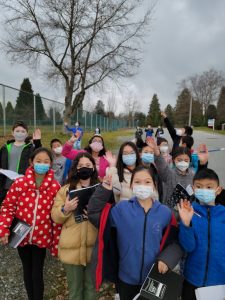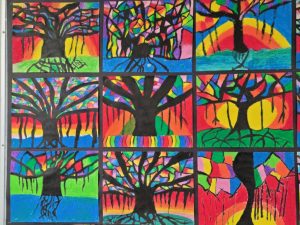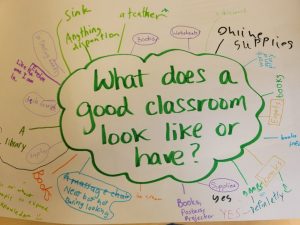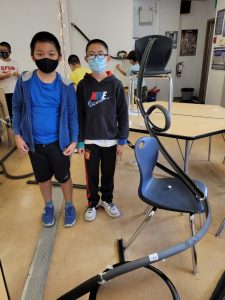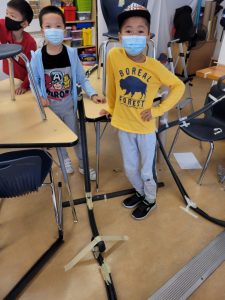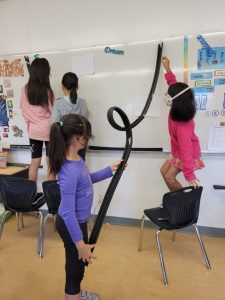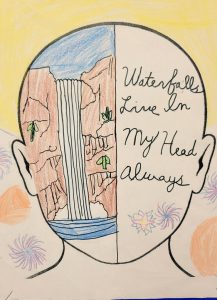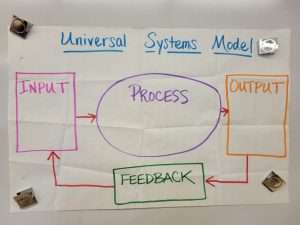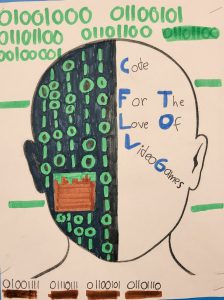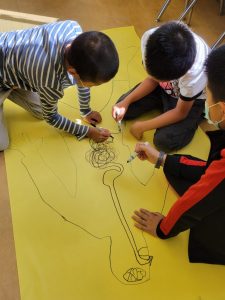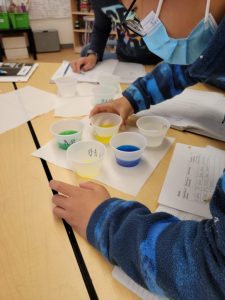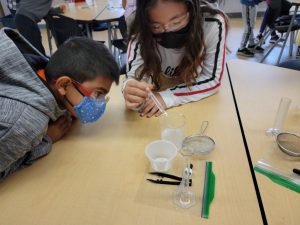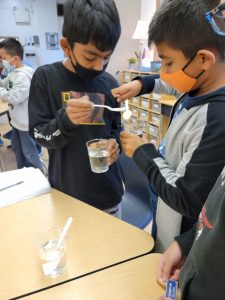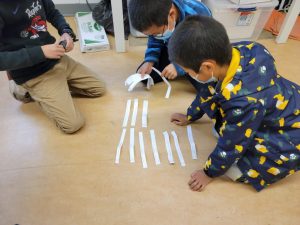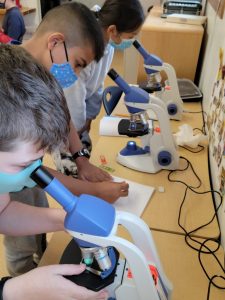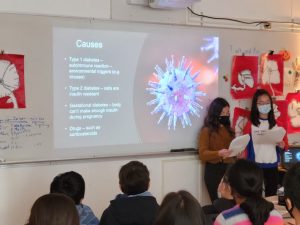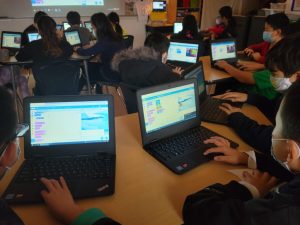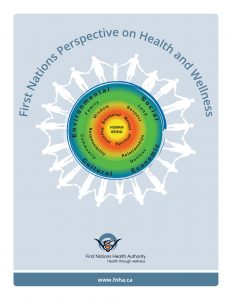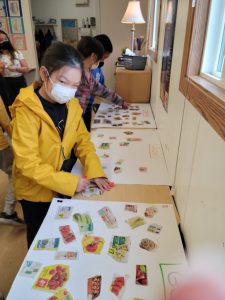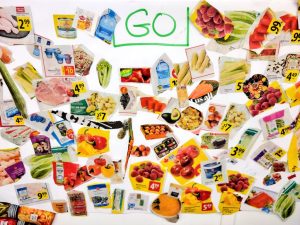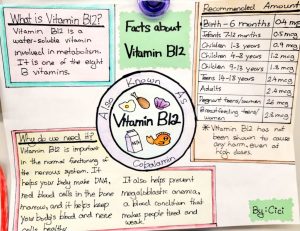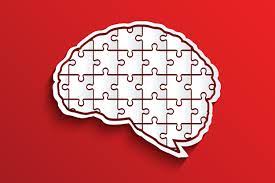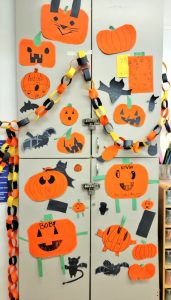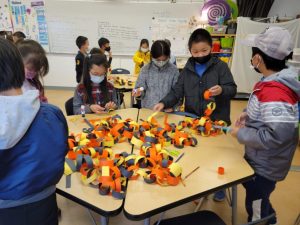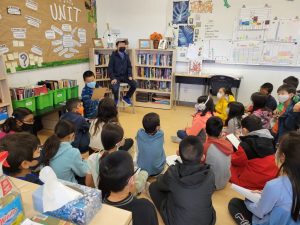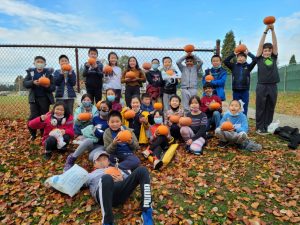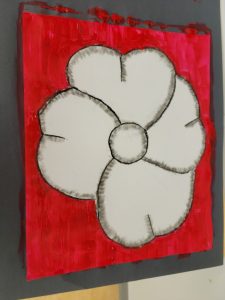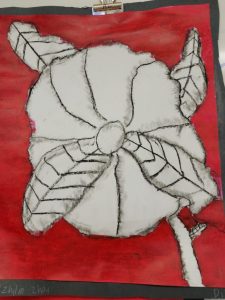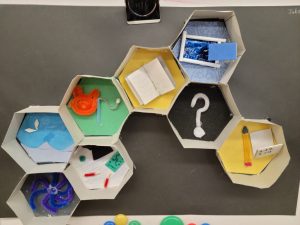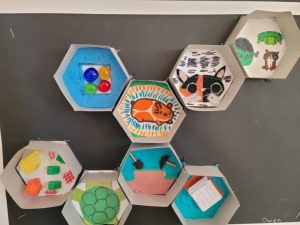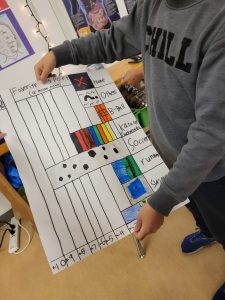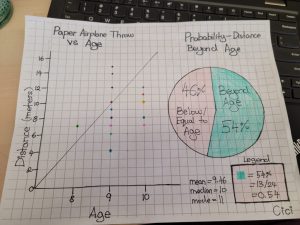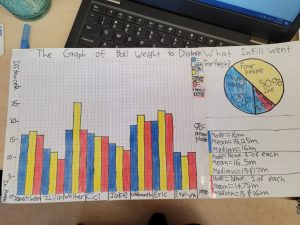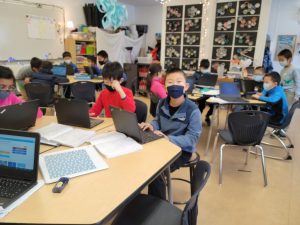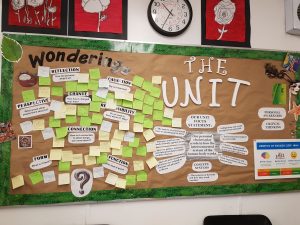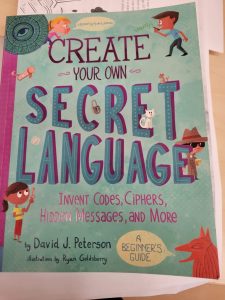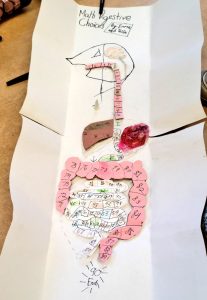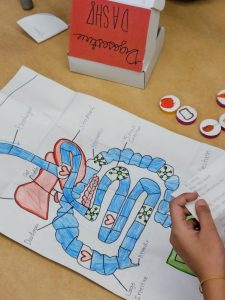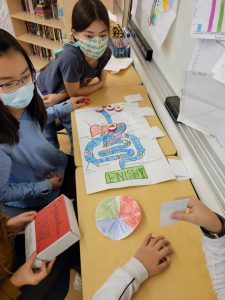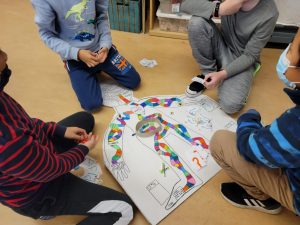Division 5 Overview Term Two, November 2021- March 2022!
Here is a review of the many things we did during term two, 2021-2022!
To tie the big ideas from our curriculum together into a larger, enduring understanding,
we studied all subjects through the lens of universal, conceptual themes.
First, we focused on the concepts of CREATIVITY and CHANGE
in our unit Human Creations
Unit Focus Statement:
We use creativity and knowledge together to make innovations that change our world.
Core Competency Focus:
Creative Thinking
What is creativity?
(Core Competencies, Science, Career Education, ADST, Socials, Language Arts)
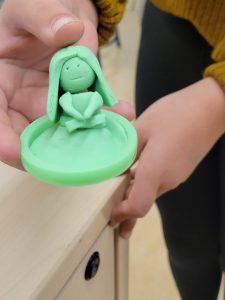 We used this unit to better understand the nature of creativity. What is it? Who has it and why? Can we cultivate it? Can it be taught? We did a variety of activities to explore creativity, such as reading a collection of picture books about imagination and ideas; doing theatre improvisation; creating Scratch programming and games as part of the Hour of Code week in December; and constructing maker art for the holidays out of mixed media such as wool and found objects.
We used this unit to better understand the nature of creativity. What is it? Who has it and why? Can we cultivate it? Can it be taught? We did a variety of activities to explore creativity, such as reading a collection of picture books about imagination and ideas; doing theatre improvisation; creating Scratch programming and games as part of the Hour of Code week in December; and constructing maker art for the holidays out of mixed media such as wool and found objects.
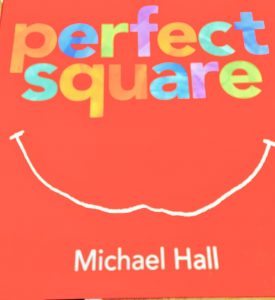 Some activities were designed as “alternative uses” tests, which are often employed by researchers to test creativity. How many things can you make out of a small can of play doh in a short time period?
Some activities were designed as “alternative uses” tests, which are often employed by researchers to test creativity. How many things can you make out of a small can of play doh in a short time period?
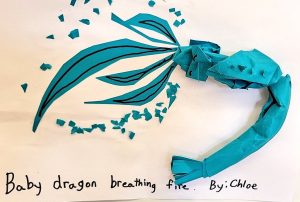 We read the book The Perfect Square, then everyone took a plain, boring piece of paper, and with only five cuts and folding, constructed new 3D creations from our imaginations.
We read the book The Perfect Square, then everyone took a plain, boring piece of paper, and with only five cuts and folding, constructed new 3D creations from our imaginations.
We watched several TED talks about creativity, and we did shared, non-fiction readings from the Time Magazine: Creativity Issue to better understand the brain science behind creativity, and how people think creativity can be cultivated in our learning and daily lives.
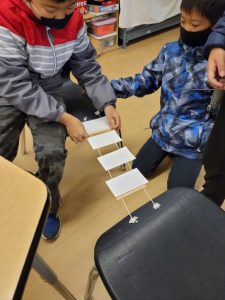
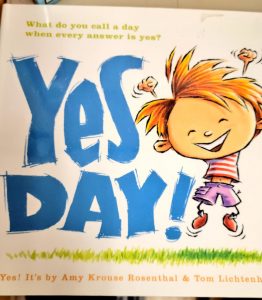 We took on some creative-thinking challenges, such as building a bridge across a span with limited materials and time, or building towers to support a certain weight. Then, we discussed the skills you need for creative thinking, such as risk-taking, collaboration, being open minded to others’ ideas, saying YES instead of NO, and trying things many different ways!
We took on some creative-thinking challenges, such as building a bridge across a span with limited materials and time, or building towers to support a certain weight. Then, we discussed the skills you need for creative thinking, such as risk-taking, collaboration, being open minded to others’ ideas, saying YES instead of NO, and trying things many different ways!
As part of language arts, we also took time to do some quick-writes for creative writing, focusing on idea generation, risk-taking in writing, and sharing of personal ideas with others. Ms. D emphasized not censoring ideas and focusing more on getting things to paper when writing. We also talked about how GROUP THINK can be better than SOLO THINK for writing ideas, or for any project! Building upon someone else’s ideas is okay, and it is the way innovation happens!
We discussed the nature of PLAY and developing creative thinking skills. How do younger children feel and touch materials as they explore their potential uses? Why do younger children have a different attention span? Why does the way we play change as we get older?
How do we make work easier? With simple machines!
(Science, Math, and ADST)
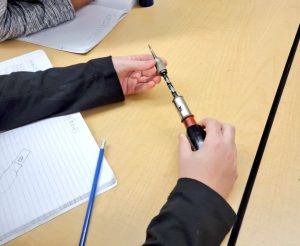 Creativity is important to solve problems! We explored how humans have used experimentation and scientific knowledge to create simple machines that make work easier. To begin our discussion, a pile of weird tools from Ms. D’s and Mr. L’s eclectic collection, including some antiques, were put out on tables for students to explore and draw. Everyone had to guess what the tools are used for and how they work!
Creativity is important to solve problems! We explored how humans have used experimentation and scientific knowledge to create simple machines that make work easier. To begin our discussion, a pile of weird tools from Ms. D’s and Mr. L’s eclectic collection, including some antiques, were put out on tables for students to explore and draw. Everyone had to guess what the tools are used for and how they work!
Then, we identified the main simple machines and did hands-on activities to experiment with them. Let’s lift Ms. D up with one student using a giant wood lever and fulcrum!
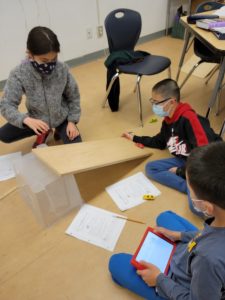 We had car races down inclined planes, doing math involving distance/time/rate, and discovering how speed is related to the height of the plane.
We had car races down inclined planes, doing math involving distance/time/rate, and discovering how speed is related to the height of the plane.
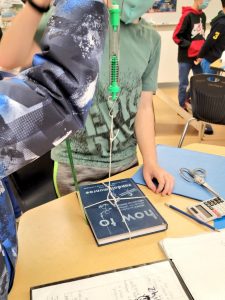 We lifted books up a plane using a Newton gauge, to show how less force is required when we add more distance, pulling books up a plane instead of lifting them directly.
We lifted books up a plane using a Newton gauge, to show how less force is required when we add more distance, pulling books up a plane instead of lifting them directly.
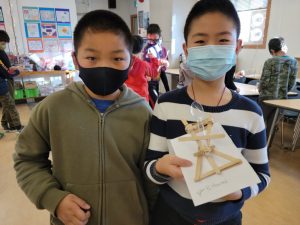 We identified the steps of the design process, then created several devices using creative thinking and simple machines. First, we made marshmallow catapults, seeing who, with limited time and materials, could build a device that would successfully launch marshmallows the furthest across the classroom.
We identified the steps of the design process, then created several devices using creative thinking and simple machines. First, we made marshmallow catapults, seeing who, with limited time and materials, could build a device that would successfully launch marshmallows the furthest across the classroom.
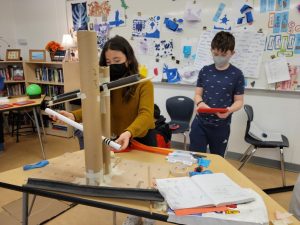 Then, we researched Rube Goldberg, who designed machines that were very complicated, but completed very easy tasks! We created Rube Goldberg devices all over the classroom, using a variety of found materials, objects, and the design process.
Then, we researched Rube Goldberg, who designed machines that were very complicated, but completed very easy tasks! We created Rube Goldberg devices all over the classroom, using a variety of found materials, objects, and the design process.
Finally, we also learned about hydraulics, discovering how liquids, unlike other states of matter, can’t be compressed! Working collaboratively, we made cranes and other unique devices.
Human Innovations over Time — The concept of CHANGE
(Socials, Language Arts, Core Competencies)
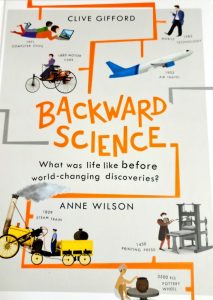 Our creativity has led to many innovations that have changed our lives over time. What are those innovations? When did we start using simple machines? Has our use of technology been positive or negative? We had many discussions about the impact of technology, as well as the history of human creations. The book Backward Science gave us a better idea of what life was like before we had inventions like the toilet or the car!
Our creativity has led to many innovations that have changed our lives over time. What are those innovations? When did we start using simple machines? Has our use of technology been positive or negative? We had many discussions about the impact of technology, as well as the history of human creations. The book Backward Science gave us a better idea of what life was like before we had inventions like the toilet or the car!
We looked at early Indigenous innovations, as well, such as snow goggles, inukshuks, umiaks, burins, spindle whorls, and ulus. We learned what early tools were used for, which First Nations, Inuit, or Metis groups created them, and how the tools addressed people’s basic needs. We also had a virtual visit from the Museum of Anthropology, during which we learned about archeology, the process of discovering early belongings of the Musqueam peoples along the Lower Fraser River, and what these belongings could tell us about the early life of the Musqueam before the arrival of Europeans to the Lower Mainland.
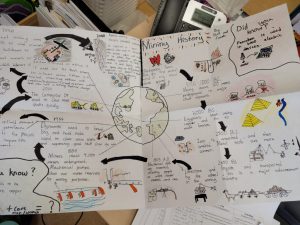 We read the book Ingenious and were surprised how many important innovations originated in Canada! We identified technologies used in different areas of our lives, such as communication, health, transportation, and entertainment; then we evaluated each one for its positive and negative impacts on humans. Each student chose to research one area further, creating a timeline to illustrate how technologies have changed over time.
We read the book Ingenious and were surprised how many important innovations originated in Canada! We identified technologies used in different areas of our lives, such as communication, health, transportation, and entertainment; then we evaluated each one for its positive and negative impacts on humans. Each student chose to research one area further, creating a timeline to illustrate how technologies have changed over time.
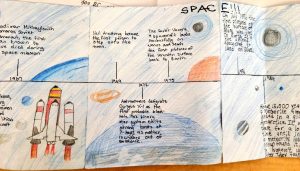 As we did research, we focused on how to evaluate online sites to ensure they are legitmate sources, how to ask questions about your topic first before starting the research process, and how to document notes in a two-column format in your own words, citing where you found the information.
As we did research, we focused on how to evaluate online sites to ensure they are legitmate sources, how to ask questions about your topic first before starting the research process, and how to document notes in a two-column format in your own words, citing where you found the information.
We read the books Goodnight iPad and Nerdy Birdy Tweets to discuss how technology such as smartphones and social media can distract from other activities or relationships. What impact is technology having on children? Using MS Teams, we shared and read one another’s links to online resources, as we looked for proof about whether video games and technology have had a positive or negative impact on children.
We also did some self-reflection about how we have CHANGED over time, too! We read the book Once Upon A time There Was and Will Be So Much More, then brainstormed how we have changed since being a baby. After, we imagined what we would be doing next year, in ten years, and in fifty years!
Finally, each student did a PowerPoint presentation on the innovation or invention they believed was the most impactful on human lives. This allowed everyone to practice creating aesthetic presentations, giving and receiving constructive feedback, and research documentation skills.
Math is a Creative Tool for Innovation! (Math and Critical-Thinking Strategies)
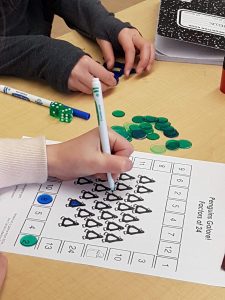
How can we approach multi-digit multiplication with creative thinking? Why do we use multiplication, and what is it? Using Carole Fullerton’s Multiplicative Thinking, we played games to learn about multiples, factors, prime factor trees, squared numbers, exponents, and math properties (distributive, associative, and commutative.) We experimented with many different ways of solving 2 by 2 multiplication problems, such as the window, the FOIL method, mental math, and the traditional column approach.
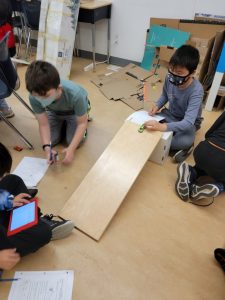 As we completed our science activities, we also used multiplication, division, and some algebraic thinking to solve problems related to measuring WORK in newtons or determining the RATE of speed of an object. We talked about mathematical/science measurement terms such as weight, mass, distance, and rate during our hands-on activities.
As we completed our science activities, we also used multiplication, division, and some algebraic thinking to solve problems related to measuring WORK in newtons or determining the RATE of speed of an object. We talked about mathematical/science measurement terms such as weight, mass, distance, and rate during our hands-on activities.
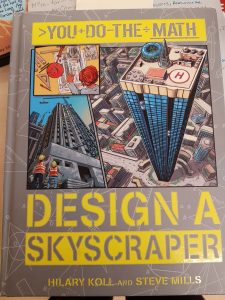 Using You Do the Math: Skyscrapers, we looked at the combination of math knowledge needed to build new things such as skyscrapers! This included understanding geometric solids, measurement, reading tables, plotting coordinates, area, and perimeter. We did problem solving involving basic fractions and decimals, and some students did surface area or algebraic challenges. This work continued into our next unit on migration.
Using You Do the Math: Skyscrapers, we looked at the combination of math knowledge needed to build new things such as skyscrapers! This included understanding geometric solids, measurement, reading tables, plotting coordinates, area, and perimeter. We did problem solving involving basic fractions and decimals, and some students did surface area or algebraic challenges. This work continued into our next unit on migration.
Creativity in the Arts and ADST!
(Fine Arts, ADST, Core Competencies)
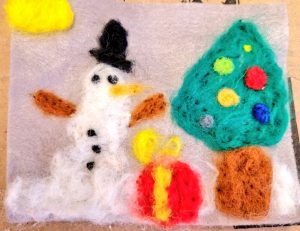 As we came closer to Winter Break, the class decided to have a Winter Theme for the classroom. So, we focused our creative thinking skills on making stuff to help decorate and to give as gifts during the holidays. We also participated in the HOUR OF CODE, a celebration of coding all over the world!
As we came closer to Winter Break, the class decided to have a Winter Theme for the classroom. So, we focused our creative thinking skills on making stuff to help decorate and to give as gifts during the holidays. We also participated in the HOUR OF CODE, a celebration of coding all over the world!
We worked with new materials and we learned new methods of creation, such as wool felting, paper folding, watercolour techniques, and acrylic landscape painting on wood. Hopefully everyone enjoyed seeing the results at home!
In January, when we came back from Winter Break, we learned all about SCRAPPY CIRCUITS, which is about making electricity creations with dollar store materials! We discussed how a circuit is made, how electrons travel in the circuit, and how batteries work. Then, we used our creative thinking to put together our own circuits with cardboard, LEDs, foil, and binder clips! Some students loved it so much they chose to continue playing with it at free choice or at home!
Caring for our Community! (Core Compentencies)
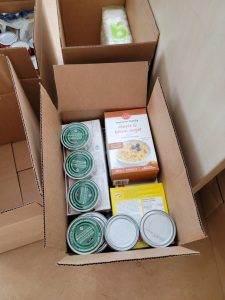 I was proud of Division 5, as they led two activities that helped our school community, and the greater Lower Mainland community, too! Our class organized the FOOD BANK Drive, which meant advertising the event, collecting donations from each class, carefully packing them into boxes, and helping load them up when the Food Bank came to collect them. Division 5’s efforts help raise over $3,000 for the Food Bank in both canned items and monetary donations!
I was proud of Division 5, as they led two activities that helped our school community, and the greater Lower Mainland community, too! Our class organized the FOOD BANK Drive, which meant advertising the event, collecting donations from each class, carefully packing them into boxes, and helping load them up when the Food Bank came to collect them. Division 5’s efforts help raise over $3,000 for the Food Bank in both canned items and monetary donations!
Right before Winter Break, Division 5 wrote a holiday song for Suncrest staff, decorated a cart, and then went door to door in the school delivering coffee, tea, and cheer to each teacher as a way to thank them for their work. We received a lot of amazing emails of thank you in response. Great job, Division 5!
For our SECOND UNIT in TERM TWO,
we focused on the concepts of EXPLORATION and IDENTITY
in our unit On the Move!
Unit focus statement:
Migration is a response to challenges, risks, survival, and a natural need to explore.
Core Competency Focus:
Positive Personal and Cultural Identity
**Please note, we will be finishing this unit up until Spring Break,
and so we will be adding to this entry with photos as student work is completed,
and report cards will reflect only what we are able to finish before February 25th.
How am I an explorer?
(Core Competency of Positive Personal and Cultural Identity)
 What does it mean to be an explorer? What would you feel and do? We unpacked the meaning of exploration and realized it does not only apply to ancient explorers who crossed the seas. It can apply to us and involve risk-taking, or careful, methodical observation for art, science, and research. It can also mean making an effort to explore one’s identity and culture.
What does it mean to be an explorer? What would you feel and do? We unpacked the meaning of exploration and realized it does not only apply to ancient explorers who crossed the seas. It can apply to us and involve risk-taking, or careful, methodical observation for art, science, and research. It can also mean making an effort to explore one’s identity and culture.
Through exercises in the book How to be An Explorer of the World, we will continue to hone our observation and noticing skills, particularly through explorations outside. We are also reading many picture books to facilitate discussions about our own identity, culture, and acceptance of others’ identities.
Migration — Humans
(Socials, Science, Language Arts, Core Competencies)
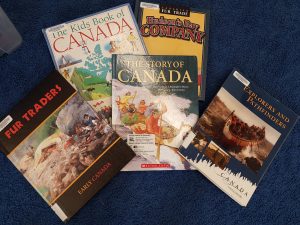
Why do people move from place to place? What is your own migration story? Students asked their parents for information about their family tree and charted the migration path of past generations coming to Canada.
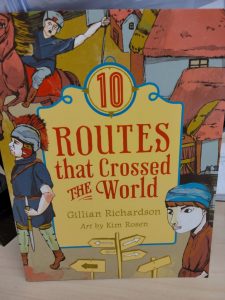 Using the book Human Migration and Why We Live Where We Live, among other book and online resources, we discussed the many push and pull factors that cause people to move as they seek a better quality of life. We talked about how some people move all the time because of a “restless gene” that just makes them seek novelty and something new!
Using the book Human Migration and Why We Live Where We Live, among other book and online resources, we discussed the many push and pull factors that cause people to move as they seek a better quality of life. We talked about how some people move all the time because of a “restless gene” that just makes them seek novelty and something new!
Each student is doing some GEOGRAPHY studies to learn about the different countries in each continent and expand their international mindedness about the world. It allowed is to also talk about where certain languages have come from in the world, which parts of the world were explored by who, and which countries are FRENCH speaking. Ms. D has a large map in the classroom with quality of life data on each country, and this allowed us to have discussions about why people move from one place to another as an immigrant or refugee.
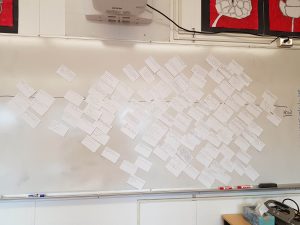
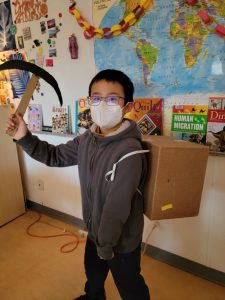 Using a TON of great books from the District Library, we did a group inquiry about “How did we get here?” How did we all come to be in Canada? What were the reasons people came here? Who was here first? We made a timeline on the board and listed the many reasons people came, such as trade, land, gold, and escaping war.
Using a TON of great books from the District Library, we did a group inquiry about “How did we get here?” How did we all come to be in Canada? What were the reasons people came here? Who was here first? We made a timeline on the board and listed the many reasons people came, such as trade, land, gold, and escaping war.
Each student chose a historical figure to represent from this timeline, and each student presented a monologue as part of our “Wax Museum of History!”
Students also looked at 10 different case studies of people trying to come into Canada and made decisions about which 5 would get to come in. This is part of an ongoing conversation about immigration policy in Canada and how the government makes decisions about who it lets in to the country. What is the difference between a permanent resident and a citizen? Is it required to speak English or French? Students paired up with one another to create their own country, with its own immigration policy, and new life to offer potential immigrants!
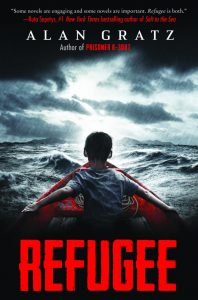 To better understand what it is like to be a refugee or immigrant, each student read a different historical fiction novel, such as Escape from Aleppo, Refugee, or Homes. As they read, they were asked to record new vocabulary, and to specifically find out more information about the cultural identities of the characters. What was their place of origin? Where were they traveling to and why? Did they have a specific ethnic or religious background?
To better understand what it is like to be a refugee or immigrant, each student read a different historical fiction novel, such as Escape from Aleppo, Refugee, or Homes. As they read, they were asked to record new vocabulary, and to specifically find out more information about the cultural identities of the characters. What was their place of origin? Where were they traveling to and why? Did they have a specific ethnic or religious background?
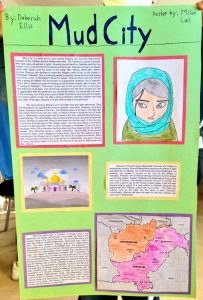 The emphasis was on understanding that reading a novel with a real story behind it may require extra research, making connections with true facts of history. Each student then had the option of presenting their reading comprehension with a diorama, poster, or piece of art, accompanied by three paragraphs of writing to explain their work.
The emphasis was on understanding that reading a novel with a real story behind it may require extra research, making connections with true facts of history. Each student then had the option of presenting their reading comprehension with a diorama, poster, or piece of art, accompanied by three paragraphs of writing to explain their work.
Migration – Animals and Getting Outside
(Science, Socials, Language Arts, ADST, PHE)
Humans aren’t the only ones moving around! We watched the BBC presentation Planet Earth: Pole to Pole, which has amazing footage of animal migrations, moving between different biomes of the world. Using National Geographic resources, we looked at the migration routes of the red crab, the wildebeest, whales, and monarch butterflies. We discussed the different reasons animals migrate, as well as the many internal or external cues animals use to know when it is time to move.
We were fortunate to have a virtual trip from the local Vancouver Avian Research Centre (VARC), who taught us about the many jobs birds have in our ecosystem, as well as the banding that researchers do at Colony Farm in Coquitlam to track migratory birds. The paths of these birds can tell us a lot about climate change and the state of the environment.
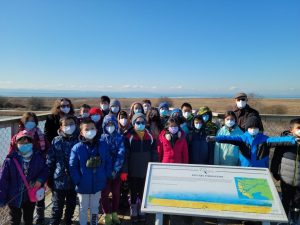 We also had our first in-person field trip in two years to Reifel Bird Sanctuary!! This is one of the local, protected estuaries where you can find migratory animals this time of year. We learned about local bird species, the essential things animals need to survive, and why the estuary is a popular stop on migration routes. Many of us fed birds for the first time, and we saw sandhill cranes, saw whet owls, and red-wing blackbirds, among other species.
We also had our first in-person field trip in two years to Reifel Bird Sanctuary!! This is one of the local, protected estuaries where you can find migratory animals this time of year. We learned about local bird species, the essential things animals need to survive, and why the estuary is a popular stop on migration routes. Many of us fed birds for the first time, and we saw sandhill cranes, saw whet owls, and red-wing blackbirds, among other species.
Each student then chose a migratory animal to research further and created a Puppet Pal presentation about their findings using the iPad. We will be presenting these to one another after spring break.
We also conducted a Citizen Science activity on February 18th, the Backyard Bird Count! Everyone was surprised how many different species we could see right around the school, such as red-wing blackbirds, chickadees, a bald eagle, song sparrows, starlings, crows, gulls, and robins!
These walks and explorations outside were a part of our physical and health education, as we focused on getting outside, breathing fresh air, and learning to make mindful observations for both science and our own mental health.
This was in combination with outdoor games of speed ball, running fitness, and indoor gym games to stay active and focused during the school day. Ms. D also allows students to regularly use the break board, as we learn about how to better approach academic work and project management through movement breaks!
Independent Project Beginnings – Questions and Primary Research
(Socials, Science, Language Arts)
 Each year, Division 5 students take on a passion topic of their choice to research, which leads to presentations to the community in mid-June. In January, everyone chose a topic and brainstormed questions to begin their research. Ms. D taught everyone about how to ask deeper questions using the Jar of Inquiry Model. After a beginning list of questions was created, students began their initial research.
Each year, Division 5 students take on a passion topic of their choice to research, which leads to presentations to the community in mid-June. In January, everyone chose a topic and brainstormed questions to begin their research. Ms. D taught everyone about how to ask deeper questions using the Jar of Inquiry Model. After a beginning list of questions was created, students began their initial research.
Ms. Ho, our librarian, will be working with Ms. D to provide as many books as we can to support the chosen topics. It is also important students visit their local, public library and begin to look for resources. Students were also shown how to access our library online resources to get started, as well.
It is required to do both secondary (web/books/videos) and primary (hands on/experiment/observations/interviews/surveys) research for the project. So, Ms. D talked about the various options. We also learned how to do primary research through interviews of parents from Division 5 about their immigration experiences, practicing active listening, how to ask effective questions, and how to document responses.
Art, Identity, and Quilt of Belonging
(Socials, Fine Arts, Core Competencies)
First, we brainstormed what makes up an IDENTITY? How do we know what our identity is? What represents our identity? This meant thinking more deeply about cultural, gender, and individual versus family identity, and we had a great discussion about how it is a journey discovering everything about yourself!
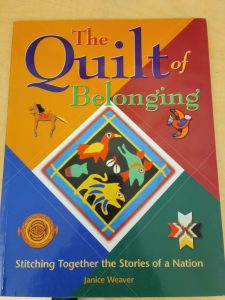 We read the book Quilt of Belonging and learned about the quilt that was made to represent the multicultural nature of Canada, with a square for each nation or ethnic identity that has come to Canada and contributed to the fabric of who we are as a whole group. Each student then created their own identity square to make a class quilt, which will be displayed after break.
We read the book Quilt of Belonging and learned about the quilt that was made to represent the multicultural nature of Canada, with a square for each nation or ethnic identity that has come to Canada and contributed to the fabric of who we are as a whole group. Each student then created their own identity square to make a class quilt, which will be displayed after break.
In addition, we continued some fine arts learning in terms of colour, line, and the use of paints and pastels, to make beautiful Banyan Tree paintings. This meant learning about a tree that doesn’t exist here, but can be found in several other countries. The students did some amazing, colourful art!
Tiny House Revolution!
(Identity, Math, Applied Design, Career Education)
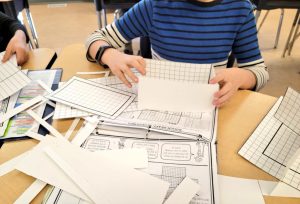 People are choosing to live in less space, so their impact is less on the world. How does a living space represent you and your beliefs about what is essential? What choices would you make? Using our ongoing work with multiplication, measurement, geometry, and proportionate reasoning that we began during unit two, as well as the design process, students created tiny house models, then discussed the area and perimeter, as well as the personal choices they made for their final creations.
People are choosing to live in less space, so their impact is less on the world. How does a living space represent you and your beliefs about what is essential? What choices would you make? Using our ongoing work with multiplication, measurement, geometry, and proportionate reasoning that we began during unit two, as well as the design process, students created tiny house models, then discussed the area and perimeter, as well as the personal choices they made for their final creations.
Students were finishing Skyscraper math from our last unit, and some also chose to do extra math challenges, whether reading articles on math topics in class, or doing extra math problems in real-world math in books available through EPIC online.
Overall, term two has been rich with learning experiences, and this overview is only a snapshot! We look forward to term three, with two new units and our independent project presentations in June!

